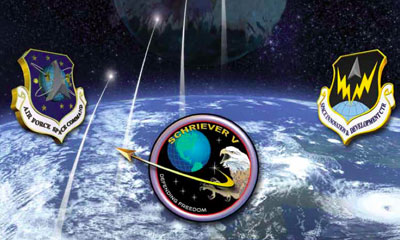Schriever V: in dubious battleby Taylor Dinerman
|
| For more than a decade space wargames have shown the US military just how vulnerable US space assets are. Instead of inspiring an urgent program of hardening and protecting the satellites and their associated ground stations, the national security establishment has dithered. |
Wargames are useful teaching tools. This has been true at least since the invention of chess, in India in the 6th century AD. As planning tools at the tactical and operational levels they are indispensable. However, at the strategic level, where political and cultural calculations play important roles, wargames lose much of their utility. Just as one cannot accurately predict the emotional salience of any given political symbol, word, or action, no one can claim to predict how a given set of military responses will influence a given set of politicians, who are, by the nature of their profession, manipulators of emotions. At the strategic and policy level, these kinds of games may only be useful for teaching military and civilian leaders the right procedures to use in the decision-making process.
For more than a decade space wargames have shown the US military just how vulnerable US space assets are. Instead of inspiring an urgent program of hardening and protecting the satellites and their associated ground stations, the national security establishment has dithered. For the most part they have found excuses as to why such an effort would be unaffordable or destabilizing. In this they have been aided and abetted by arms control enthusiasts who claim that such an effort would undermine international goodwill.
A prime example of this mentality is Vice Admiral Carl Mauney’s description, quoted from his article in Air Force Space Command’s journal, High Frontier, of the interagency “holistic, whole-of-government approach to work towards conflict resolution. Options included employing diplomatic actions—bilaterally and at the United Nations—to:
- Reduce civil space cooperation with the offending state
- Increase civil space cooperation with the attacked state
- Employ economic sanctions
- Employ an information campaign to highlight the long-term impact of the offending state’s actions.”
It is very hard to se how any of these actions would have the slightest effect on the most likely offending states. If China were the aggressor it could use its not-inconsiderable diplomatic clout to negate any US or western effort to sanction it, and it could also prevent anyone except the US, and possibly Japan, from increasing civil space cooperation with Taiwan. If the offending state were Iran, or a similar rogue actor, their leaders would simply not care whether or not anyone cooperated civility with them.
If the goal is to deter such actions, why not then threaten the commercial communications satellites with heavy jamming and/or destruction using non-debris-creating anti-satellite weapons? Alternatively, the US and its allies could act against the ground stations belonging to the firms who had sold the capability to the offender. Such strong actions would run up against allied or neutral sensitivities.
The wargame process thus becomes an exercise in self-deterrence. Effective military alternatives are pushed aside in favor of weak diplomatic ones. American weakness is exposed for all to see. As long as the goal of these exercises is conflict resolution rather than victory, it is hard to see how they truly advance America’s national interests. They may serve to illuminate weaknesses in hardware and in doctrine that would otherwise stay hidden, but surely this can be done in ways that do not undermine the will and the ability of senior military leaders to think in terms of defeating the enemy rather than “managing” the conflict.
| In the space wars of the 21st century leaders will not have months or weeks or even days to improvise anything—they may not even have an hour. |
One cause of this problem is the lingering effect of the nuclear warfighting doctrine associated with the old Mutually Assured Destruction concept. Instead of seeking technological solutions that require major investments of money, time, and political capital, leaders are tempted to try to find purely symbolic solutions such as the 1972 ABM treaty, which demand nothing more than paper, ink, and trust.
Military space operations are a fact of life. The US military, on an official level, has accepted that this makes space a “contested domain”. What is more than a little curious is the reluctance of both civilian and military leaders to do more than make a few minor investments in technology that could, someday, protect America’s satellites and harm those of a potential adversary.
In the 1930s the US Navy was reluctant to spend its limited budget in smaller anti-submarine warfare (ASW) ships and technology. Instead, it invested in large capital ships in the belief that it could improvise an ASW fleet in a hurry. After Pearl Harbor they found that this was impossible, and the slaughter a major part of the US merchant fleet ensued. It took more than a year for the Navy to build up a force that could take on and defeat the U-boats. In the space wars of the 21st century leaders will not have months or weeks or even days to improvise anything—they may not even have an hour.
